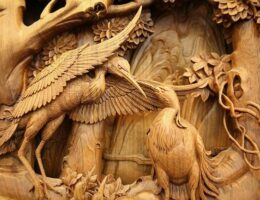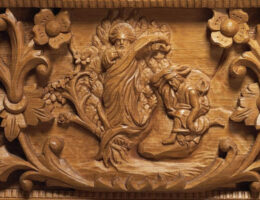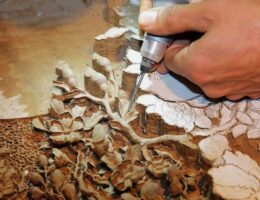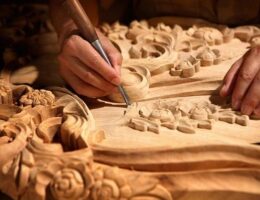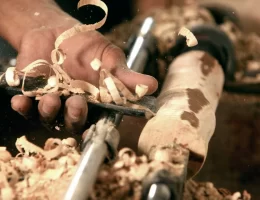IRAN ART EXHIBITION: WOODEN HANDICRAFTS HAD AN IMPORTANT ROLE IN ANCIENT TIMES OF IRAN
The history of wooden handicrafts in Iran can be somewhat divided into ancient times based on their artistic similarities:
• Pre-Islamic period: includes the early Achaemenid, Parthian, and Sassanid civilizations.
• Middle Islamic period: including the Seljuk, Ilkhanid, and Timurid dynasties.
• Safavid period.
Pre-Islamic wooden handicrafts
In pre-Islamic times, large pieces of wood were used as part of the building.
Historical documents confirm that wooden huts were built in the fifth century BC. And that there were even some items such as ladders.
In Hasanlu, there is a hall whose a stone base of wooden pillars.
Wood, as one of the most abundant natural materials, has played an important role in the construction of technical and agricultural tools and even home appliances. In this period, it was used to protect the wood from natural oils.
IRAN ART EXHIBITION: During the Sassanid period, the use of wooden coils (coils are long pieces of wood that maintain balance and spacing between columns) was common in buildings.
During this period, a kind of wood square procedure was performed, which had a geometric role.
The most important woods used in this period were cedar, mulberry, oak, elm, pine, and cypress. Some of which were transported to the center of the country by water canals.
Wooden works of the Middle Islamic period
Wooden works of the inter-Islamic period, which are related to the fifth to tenth centuries AH.
The components of wooden buildings such as columns, ceilings, doors, windows, and railings are very visible. But there are also smaller works such as boxes, frames, household items, forest tools, and hunting.
The most important role of wooden handicrafts of the fifth to tenth centuries AH is geometric patterns, parallel grooves, inscriptions, names of Imams (as), altar shape, bergamot elasticity, flowers and plants, Khatai and Islamic, blossom, palm leaves, sunflower, has been animal and human.
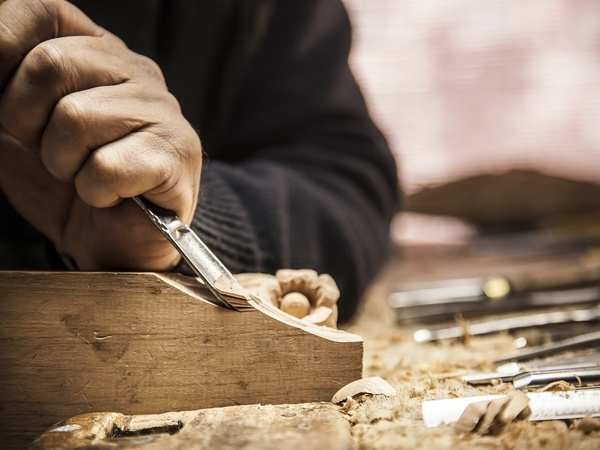
History of Wooden handicrafts in Iran the Safavid period
Most of the wooden handicrafts in the Safavid period can be considered developments. In terms of role and methods of execution. Some of these developments include the evolution of previous methods. And roles and innovations in the field of executive methods and specific Iranian style.
During this period, the works include wooden buildings and related components such as columns, ceilings, doors, and windows. As well as practical items including stairs, boxes, frames, chairs, and industrial, agricultural, and war tools. During the Safavid period, mirror work, metalworking, and painting on wood flourished, and new oils such as bows were used to protect wooden handicrafts.
IRAN ART EXHIBITION: Carving in this period is seen in a very delicate way and with a lot of paving and details. The inlay of this period is based on geometric designs, parallel grooves, and in the Iranian style. The role of flowers, plants, humans, bergamots, and altars.
Wooden handicrafts after the Safavid period, and especially in the Qajar period, not only did not have a technical evolution but also faced a decline in technical quality. Follow the previous roles and try to be inspired by the technical and artistic principles of the European wood industry.


